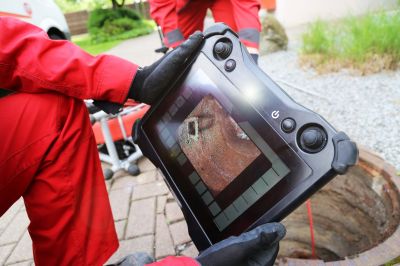Ultimate Guide to Industrial Plumbing Repair Equipment
Learn about key tools and materials that provide durability and performance for complex industrial plumbing repair tasks.
 Industrial plumbing repairs often require specialized tools and products designed to handle the complexities of large-scale piping systems. These systems are typically composed of durable materials like cast iron, steel, or PVC, which demand robust repair solutions. Whether addressing leaks, clogs, or pipe failures, professionals rely on a range of products that ensure long-lasting and effective repairs. Proper selection of repair products can minimize downtime and prevent future issues, making it essential to understand the available options.
Industrial plumbing repairs often require specialized tools and products designed to handle the complexities of large-scale piping systems. These systems are typically composed of durable materials like cast iron, steel, or PVC, which demand robust repair solutions. Whether addressing leaks, clogs, or pipe failures, professionals rely on a range of products that ensure long-lasting and effective repairs. Proper selection of repair products can minimize downtime and prevent future issues, making it essential to understand the available options.
Top Overall Option
Heavy-Duty Pipe Repair Clamp
A versatile and durable pipe repair clamp designed to provide a reliable temporary or permanent seal on damaged pipes. Constructed from corrosion-resistant materials, it offers ease of installation and compatibility with various pipe sizes and materials, making it a favored choice for industrial repair scenarios.
Types of Products For Industrial Plumbing Repairs
Pipe Repair Clamps
Clamp devices used to seal leaks or cracks in pipes quickly and effectively, available in various sizes and materials.
Industrial Sealants and Epoxies
High-strength adhesives designed for sealing leaks and repairing pipe surfaces, resistant to chemicals and high temperatures.
Pipe Sleeves and Wraps
Flexible sleeves or wraps that encase damaged sections of pipe, providing corrosion resistance and structural support.
Pipe Cutters and Threading Tools
Tools used to cut, thread, and prepare pipes for repairs or replacements, essential for precise work.
Hydraulic Pipe Buggies
Heavy-duty tools that facilitate pipe bending, straightening, or expansion during repair or installation processes.
Pipe Fittings and Couplings
Connectors used to join sections of pipe securely, available in various configurations for different pipe types.
Leak Detection Equipment
Devices that help locate leaks accurately in complex piping systems, essential for targeted repairs.
Industrial Pipe Supports and Hangers
Support systems that stabilize piping and prevent stress-related failures during repairs.
Corrosion-Resistant Coatings
Protective coatings applied to pipes to prevent future corrosion and prolong service life.
Hydraulic Presses
Tools used to apply force for pipe expansion, compression, or fitting installation in repair tasks.
Portable Pipe Inspection Cameras
Inspection devices that allow internal viewing of pipes to assess damage and guide repairs.
Industrial Pipe Brushes and Cleaners
Tools for cleaning pipe interiors before applying repair products or conducting inspections.
Emergency Repair Kits
Comprehensive kits containing essential tools and materials for quick response to pipe failures.
High-Pressure Pipe Sealants
Sealants formulated to withstand high-pressure conditions common in industrial systems.
Flexible Rubber Gaskets
Sealing components used in pipe joints to prevent leaks under varying operational conditions.
Industrial Pipe Flanges
Components used to connect pipes securely and facilitate disassembly for maintenance.
Popular Choices
Widely used for quick sealing of leaks in industrial pipes, available in multiple sizes.
Popular for their strong adhesion and resistance to chemicals, suitable for various pipe materials.
Favored for wrapping around damaged pipe sections to provide immediate protection.
Essential tools for preparing pipes during repair or replacement tasks.
Commonly used to pinpoint leak locations in complex piping networks.
Popular for shaping pipes to fit specific repair configurations.
Frequently chosen for connecting or repairing pipe sections reliably.
Trusted for extending the lifespan of repaired pipes.
Commonly used for internal pipe inspections before repairs.
Valued for rapid response in urgent repair situations.
Selected for sealing high-pressure pipe systems effectively.
Popular for ensuring tight seals in pipe joints.
Chosen for stabilizing piping during and after repairs.
Often used to prepare pipes before applying repair products.
Widely used for fitting and expansion tasks in repair work.
In industrial settings, the repair process may involve a combination of temporary fixes and permanent solutions. Products such as heavy-duty pipe repair clamps, industrial-grade sealants, and corrosion-resistant pipe sleeves are commonly used. These products are engineered to withstand high pressure, extreme temperatures, and chemical exposure, which are typical in industrial environments. Ensuring compatibility with existing piping materials and system specifications is crucial for successful repairs.
Maintenance teams often utilize specialized tools like pipe cutters, threading machines, and hydraulic presses to prepare and install repair products efficiently. Proper training and adherence to safety protocols are vital when working with high-pressure systems or hazardous materials. Investing in quality repair products and tools not only facilitates effective repairs but also extends the lifespan of the piping infrastructure, reducing long-term maintenance costs.
Overall, selecting the right products for industrial plumbing repairs involves understanding the specific requirements of the piping system, the nature of the problem, and the operational environment. A comprehensive approach that combines durable repair products with appropriate tools and safety measures can help maintain system integrity and operational efficiency in demanding industrial settings.
Key Buying Considerations
- Compatibility with existing pipe materials and sizes.
- Durability and resistance to corrosion or chemical exposure.
- Pressure ratings suitable for the system's operational pressures.
- Temperature tolerance of repair products and tools.
- Ease of installation and removal, especially in confined spaces.
- Compatibility with the operational environment, including chemical exposure.
- Availability of replacement parts and accessories.
- Certifications and compliance with industrial standards.
- Ease of use and safety features of tools and repair products.
- Long-term performance and potential for reusability.
- Cost-effectiveness considering both initial investment and maintenance.
- Compatibility with existing repair procedures and protocols.
- Size range and adaptability for different pipe diameters.
- Impact on system downtime during repairs.
- Availability of technical support and training resources.
